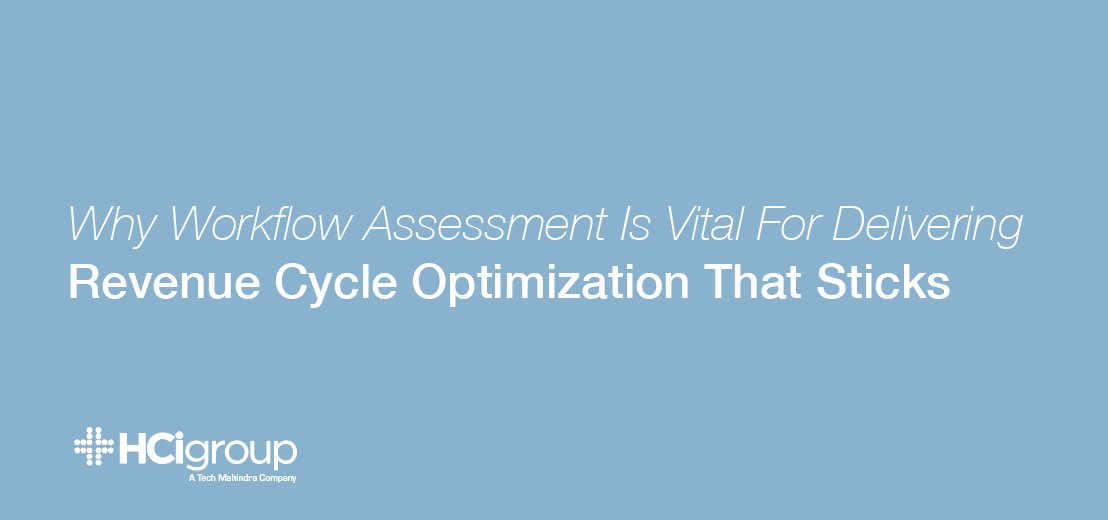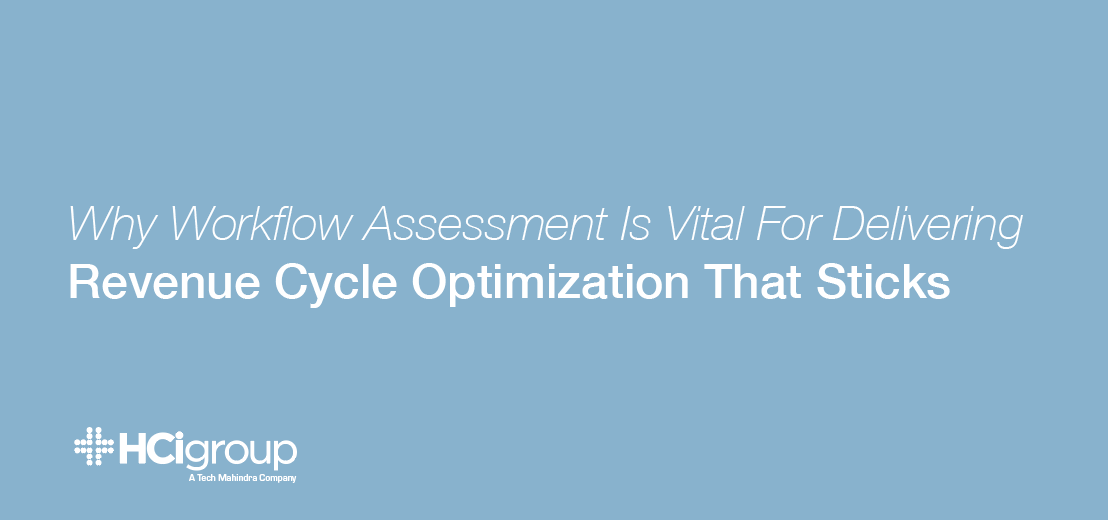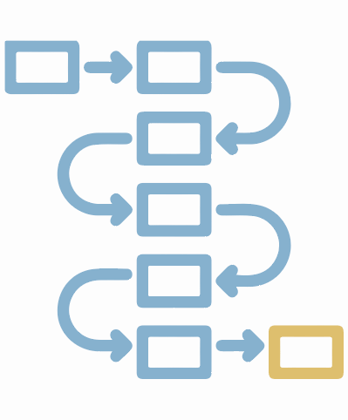Why Workflow Assessment Is Vital For Delivering Revenue Cycle Optimization That Sticks

 One of the measures of a successful healthcare IT implementation is the “stickiness” of the technology. But to be fair, this is generally more a reflection of the total project efforts, versus the technology itself. Was training sufficient to encourage adoption and gain traction with end users? Are the ROIs being realized to justify the expense and effort? Is the thruput and quality of patient care enhanced by the health technology implemented? Specifically when it comes to Revenue Cycle Optimization solutions, moving the needle on charge capture, collections, and registration ease goes a long way in justifying the RCM project and establishing stickiness. But, as with anything, we can’t expect that the tech will do the work for us. One of the most vital steps that a Revenue Cycle Project Lead can take before implementing the vendor-of-choice’s software is to understand existing workflows, where there are barriers, and what opportunities exist to optimize before the solution is even delivered.
One of the measures of a successful healthcare IT implementation is the “stickiness” of the technology. But to be fair, this is generally more a reflection of the total project efforts, versus the technology itself. Was training sufficient to encourage adoption and gain traction with end users? Are the ROIs being realized to justify the expense and effort? Is the thruput and quality of patient care enhanced by the health technology implemented? Specifically when it comes to Revenue Cycle Optimization solutions, moving the needle on charge capture, collections, and registration ease goes a long way in justifying the RCM project and establishing stickiness. But, as with anything, we can’t expect that the tech will do the work for us. One of the most vital steps that a Revenue Cycle Project Lead can take before implementing the vendor-of-choice’s software is to understand existing workflows, where there are barriers, and what opportunities exist to optimize before the solution is even delivered.
Let’s dive more into workflow assessments and why they can be so valuable for making Revenue Cycle Optimization truly stick!
Better Workflows Lead To Better Development And Utilization Of Healthcare IT Solutions
 I am absolutely convinced that building healthcare solutions around broken (or at least faulty) processes -- workflows being an element of those processes -- is a sure fire way to render the efforts wasted if not grossly short of completion any time soon. Looking closely at the use cases of clinical end users, policies and procedures observed by billing departments, and barriers communicated by busy physicians for comprehensive coding is prudent for delivering Revenue Cycle Optimization that spans technology, process, and practice. There are many elements that come into play for better managing revenue cycle, and there is tremendous value in allowing an outside party (like an RCM Consultant, which we'll speak more to later) to evaluate opportunities for technology, automation, outsourcing, clinical support, training, and more. Whether this is tackled internally or with outside help, the best starting place is an honest conversation (or two) about gaps and barriers to effective financial processes.
I am absolutely convinced that building healthcare solutions around broken (or at least faulty) processes -- workflows being an element of those processes -- is a sure fire way to render the efforts wasted if not grossly short of completion any time soon. Looking closely at the use cases of clinical end users, policies and procedures observed by billing departments, and barriers communicated by busy physicians for comprehensive coding is prudent for delivering Revenue Cycle Optimization that spans technology, process, and practice. There are many elements that come into play for better managing revenue cycle, and there is tremendous value in allowing an outside party (like an RCM Consultant, which we'll speak more to later) to evaluate opportunities for technology, automation, outsourcing, clinical support, training, and more. Whether this is tackled internally or with outside help, the best starting place is an honest conversation (or two) about gaps and barriers to effective financial processes.
Using the IDS Method To Categorize Workflow Barriers
Gino Wickman describes a simple yet powerful method for solving complex organizational or departmental issues as part of his EOS Model for businesses. This is called the Issues Solving Track, and it includes three steps:
- Identify
- Discuss
- Solve
While it may be abundantly clear that help is needed in terms of RCM for a hospital or health system, it may not be quite as evident how to address the needs and issues. Difficulty capturing comprehensive patient data prior to procedures is a horse of a different color from on-going gaps in capturing the most accurate ICD-10 codes for reimbursement and capitation management. Nevertheless, they both impact revenue cycle, and they both need to be fixed.
Employing the IDS Method to understand what isn’t working currently is a great way to gain insight into whether Revenue Cycle software can help (as part of the Solve phase), as well as where the problem is less technology and more insufficient processes.
Expectation Management Can Save Your Revenue Cycle Project At Go-Live

The reason it’s worth taking the time to do the IDS exercise as part of healthcare software implementation is that you want to be crystal clear as a project team, as an organization, as a consultant, etc. what the implementation will address...and, perhaps mostly importantly, what it won’t. There can be a tendency to see a new technology as the answer to all of the issues plaguing an organization, butmaintaining a sense of scope and realistic value will help set up the entire organization -- stakeholders to end users alike -- for success. Not only that, it doesn’t leave the revenue cycle optimization team responsible for addressing issues that are more systemic, departmental, or clinical in nature. If a barrier to RCM is identified (in the “I” phase) as something outside the realm of what the IT will address, then you have to detach expectations for the “Solve” portion of that issue from Go-Live.
The Value Of A Consultant: No One Wants To Call Their Baby Ugly
I’ve heard this said before, and while it hit an odd nerve at the time (I admittedly had an ugly baby...product wise), it’s nevertheless true. No one wants to call (or hear someone else call) their baby ugly. When processes within a health organization are failing to support efficient revenue cycle management, it can be hard for that same group of people to call out the glaring, ugly issues. To circle back on the IDS Model mentioned above, they get paralyzed in the Identify phase because it’s hard to say something you own is failing. But that has to be overcome to move forward.
Bringing in a partner to do workflow assessments and process analysis is a great way to get a fresh set of eyes on the problem and to avoid the traps of stewing in on-going, broken systems because change is really hard and “that’s the way we’ve always done it” is the war cry of the team. This also allows for the introduction of process improvement strategies that have been tried and tested by other organizations, and you get the value of insight from the vantage of experience and detachment from the minutia. Also, consultants know better than to call anyone ugly.
Solve Your RCM Woes Once And For All
Taking the time to unearth root issues and barriers to progress are key for making change that truly results in a healthy bottom line, efficient workflows, and Revenue Cycle Optimization efforts that stick.
